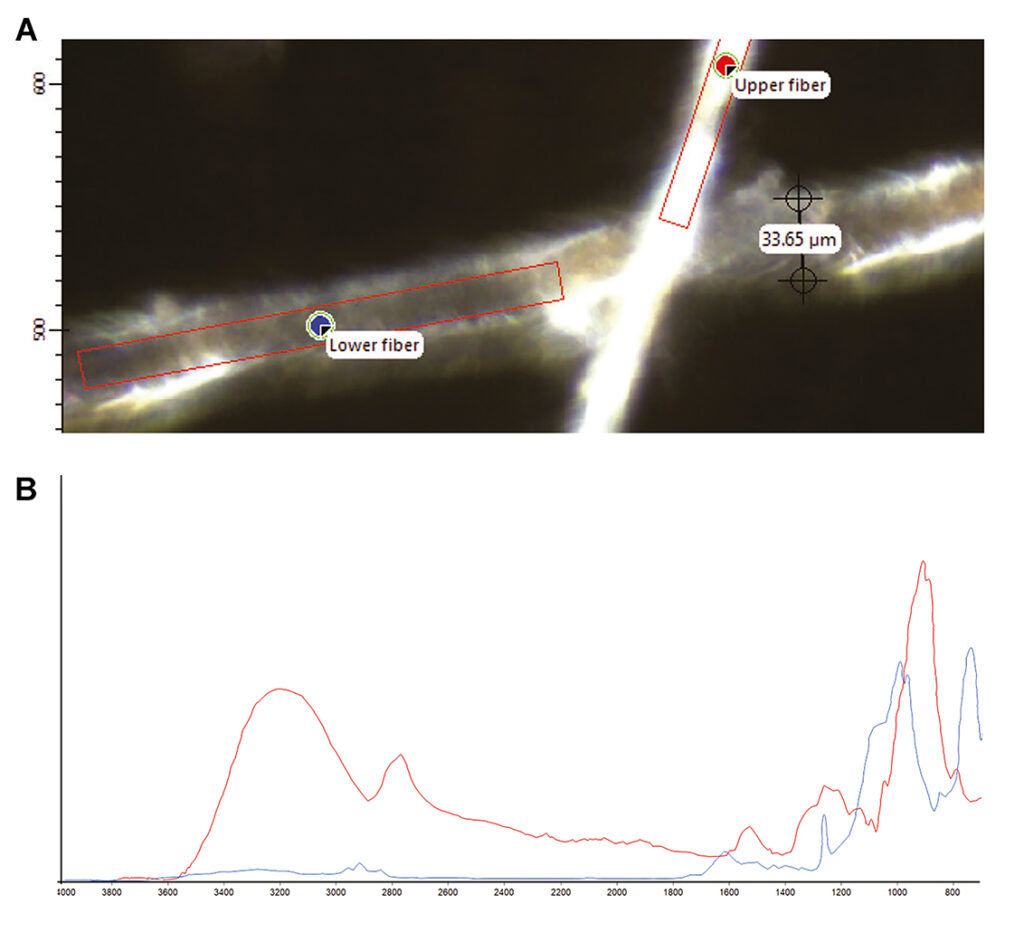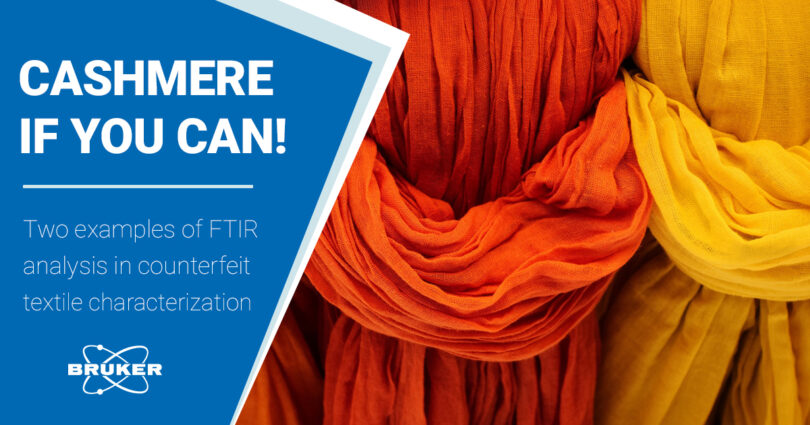Non-invasive identification of textiles by FTIR spectroscopy offers an excellent technique for unmasking counterfeit products.
Fabric adulteration
High-quality fabrics such as silk or cashmere are very popular because of their comfortable feeling on the skin and robustness. Of course, this is also reflected in their price. Unfortunately, this increases the risk that these fabrics are diluted or replaced by cheaper materials.
In 2014, for example, a case in Italy caused a stir because fur from rats (among other things) was found in Cashmere products.[1,2] Thus, to prevent counterfeiting, it is necessary to monitor textiles and their raw materials. In such cases, FT-IR can provide targeted evidence of counterfeiting.
FTIR spectroscopy in fabric analysis
For fabric manufacturers, as in many other industries, time is money. Because of that, it is important to check textile materials as efficient as possible. With FTIR large amounts of natural and synthetic materials can be characterized in short time. On top of that it also offers a non-invasive identification of textiles. This means that integrity or usefulness of the material is not compromised during analysis. Thus it can still be used for production or further analysis.
To showcase the use of FTIR spectroscopy in textile industries, we want to show you two examples using the ALPHA II FTIR spectrometer and the LUMOS II FTIR microscope.

Example #1: Natural or synthetic silk?
In this example two supposed silk materials are compared. For the analysis, no sample preparation is needed. The fabrics are simply placed on the measurement interface of the ALPHA II spectrometer and the measurement is performed in only 30 seconds. Subsequently the software automatically checks the reference data to determine the identity of the material.
A database containing verified IR reference spectra of silk and other textile materials is then used to find a match for the unknown spectrum. The first material clearly passed the test and is identified as natural silk (A). The second material (B), however, did not and the material is revealed to be cheap polyester.

Example #2: Cashmere or viscose?
With FTIR microscopy, even single fibers can be analyzed to verify their identity. Cashmere fabrics are often stretched with cheaper synthetic or organic materials to increase profits. As prove of concept, one cashmere and one viscose fiber were placed on the LUMOS II microscope (see image below (A)) near each other. The analysis then proceeds yielding FTIR spectra of high quality (B). The differences between the two spectra is evident at first glance. By comparing the data with verified references, the blue spectrum was identified as cashmere (blue spectrum). The red spectrum was matched to viscose (red spectrum).

Conclusion
FT-IR spectroscopy is an established technique to determine the chemical identity of synthetic and natural fibers and textiles. Both the ALPHA II FT-IR spectrometer and the LUMOS II FT-IR microscope can be used to check raw materials as well as finished products for their quality. The analysis can be performed without specific IR-spectroscopic expertise. It is also a non-invasive identification technique and fast. For a quick determination of the textile identity on a millimeter scale the ALPHA II is the device of choice. For an in depth analysis of single fibers in a textile the automated LUMOS II is the best option.
In case you are interested in more FTIR fabric applications we recommend our blog article about the analysis of fabrics in Cultural Heritage Materials.








